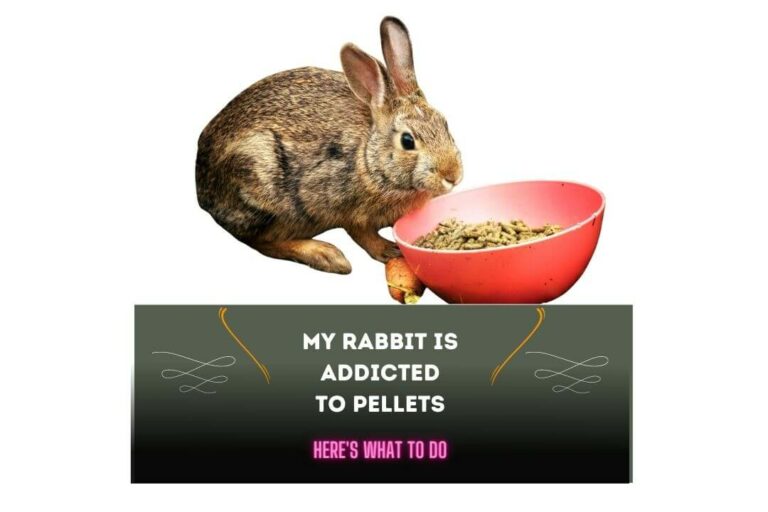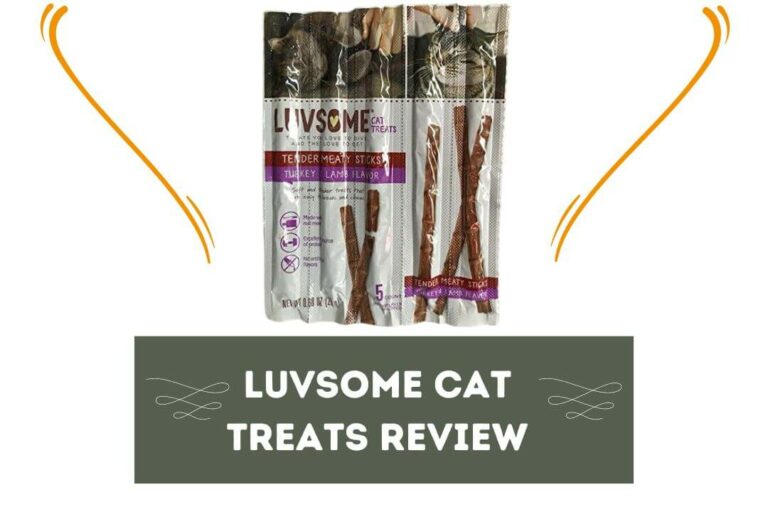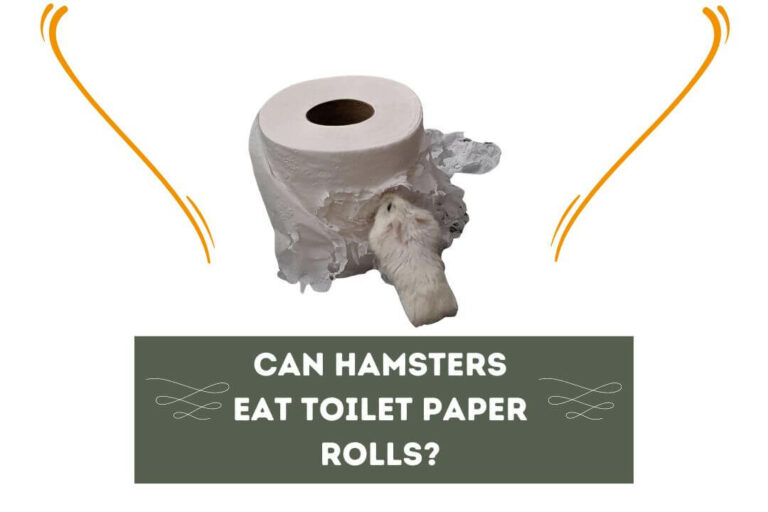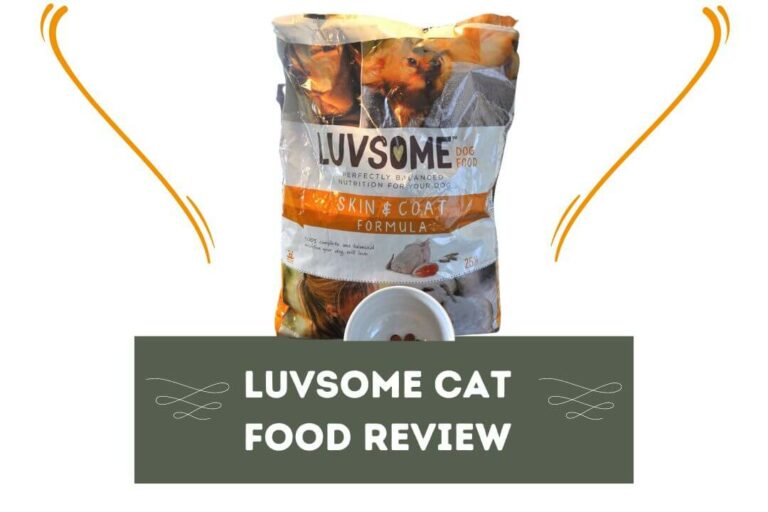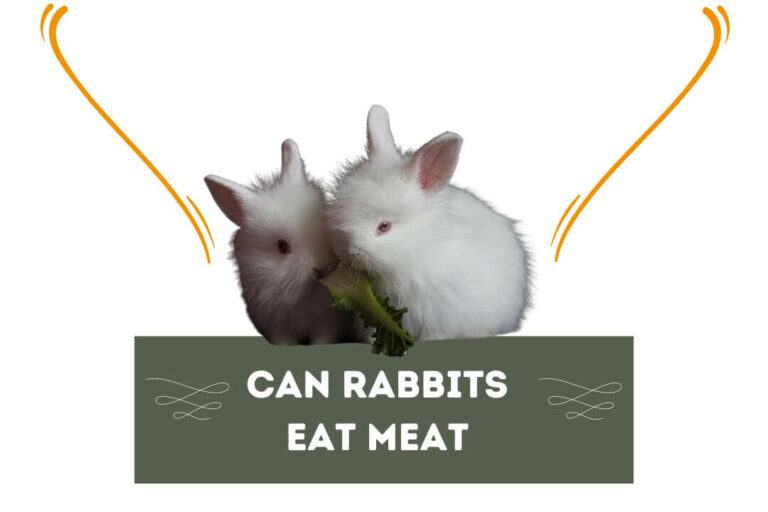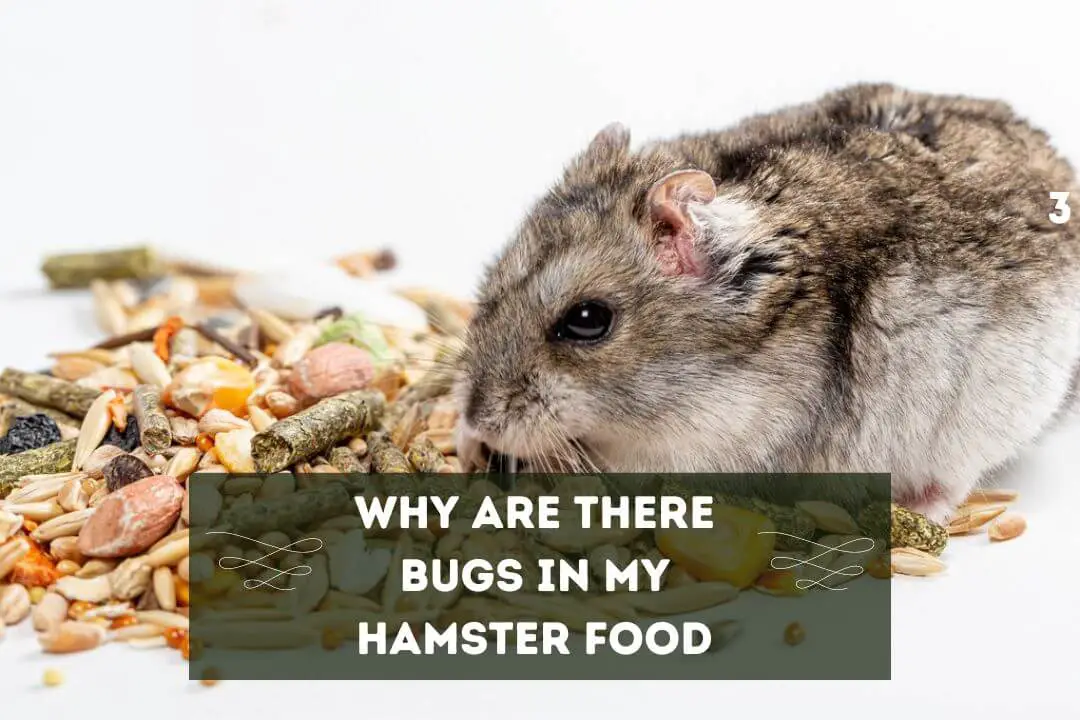
If you’re a hamster owner, you must provide the proper diet for your furry friend and keep their food in a secure place. Despite your best efforts, when you find bugs in your Hamster’s food, you feel overwhelmed and shocked.
Not only is this unpleasant to deal with, but it can also harm your pet’s health. Therefore, In this article, I’m not only going to answer ‘why are there bugs in my hamster food’ but also discuss different types of bugs that can be found in hamster food. Later, I’ll also provide tips for identifying and dealing with every bug infestation.
5 Possible Reasons Why There Are Bugs In My Hamster Food
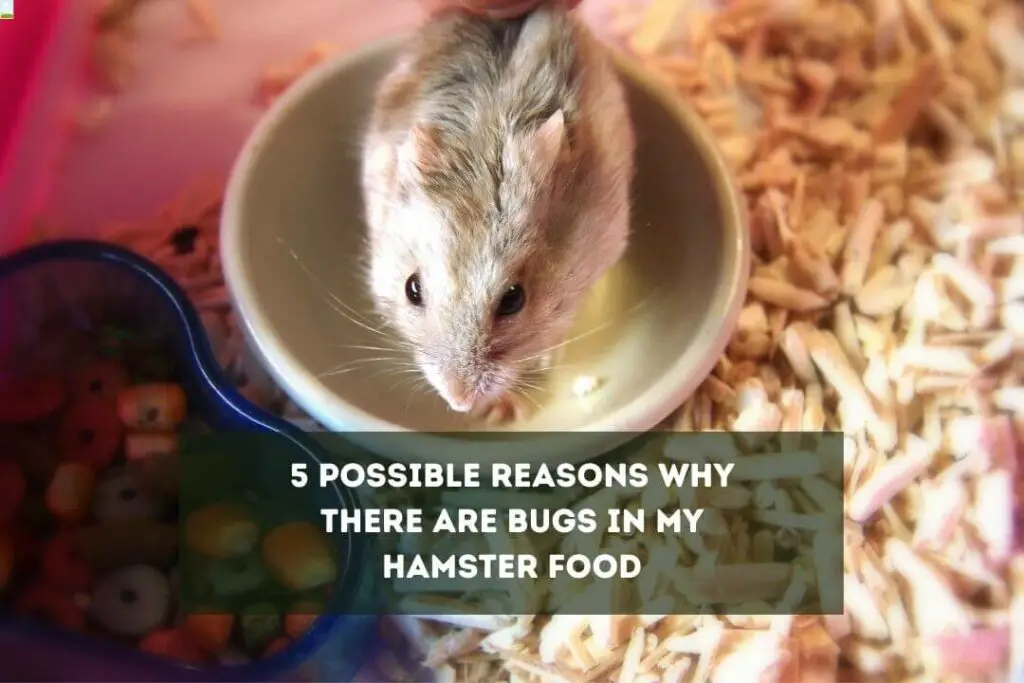
Poor Storage Techniques
You may need to store the Hamster foods in your home correctly. You should know that Improper storage techniques, like keeping it in a hot and humid spot, will attract bugs, leading to their infestation. Please store your Hamster’s food in a cool, dry, dark place that prevents bugs from accessing it.
Contaminated Packaging
You may have bought a contaminated product from the local store. B bugs can also enter the packaging when the food is being manufactured, transported, or stored. This usually happens when the manufacturer needs to seal their food packaging properly or keep their food packages in a suitable storage area that is not clean. If you find any packaged Hamster food contaminated with Birds, never mind contacting the manufacturer, or you can contact the store directly from where you bought it.
Reputable Sources
If you have purchased your Hamster food from an unknown source, it might be why you are finding so many bugs inside it. No doubt that Buying hamster food from unknown sources may lead to a higher risk of bugs being present in the food.
This is why I always advise not only to focus on purchasing high-quality food but also on getting it from reputable sources that follow good manufacturing and storage practices.
DIY Hamster Food
Prominent people prefer making their pet Hamster food as this is a cheaper alternative. However, you should not say that dead Hamster food may be a more affordable and healthy alternative; it may also attract many pests and bugs if you don’t keep it properly sealed, secured, and stored. Also, you must use fresh ingredients while preparing homemade Hamster food so that it’s not prone to contamination.
Climate
Lastly, few specific works thrive in humid and warm environments. Therefore, if you reside in a region that experiences hot weather most of the year, there are bugs around or inside the Hamster food. Certain Insects like weevils, moths, and ants can infest hamster food if the environment is conducive to their growth.
Before you ask how to get rid of bugs in Hamster food, it’s essential to understand what type of bugs are likely to infest. Depending on the type of bugs, you should use an appropriate solution.
3 Types of Tiny Bugs in Hamster Food You’re Likely To Encounter
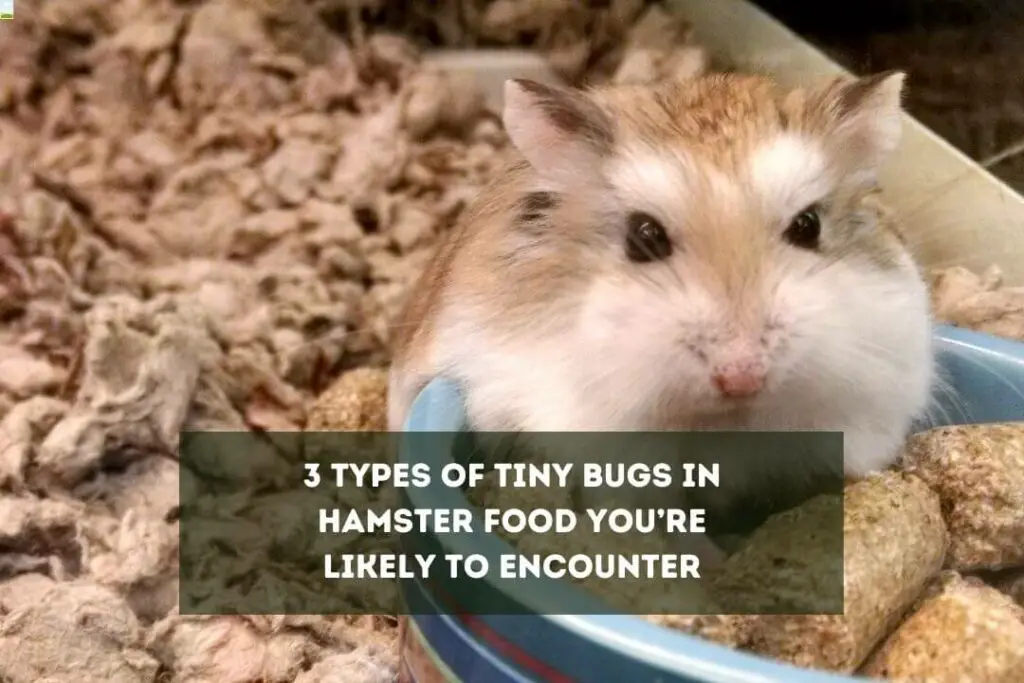
Brown Bugs In Hamster Food
I hope you know that brown bugs are usually attracted to the warm and humid environment that hamster food provides. This type of bug common in hamster food is popularly known as the flour beetle.
Flour beetles tend to be small and brownish-red in color and measure between 2 and 4 mm long. It would help if you remembered that these brown bugs could fly, which means they can quickly spread throughout your home, infesting other food sources.
These brown insects feed on flour and love to eat cereal, grains, and other dry foods, including hamster food. If you notice any brown bug infestations, you should immediately discard the food and clean the container.
After that, you can replace the food with a fresh batch. To prevent this from recurring, please store your hamster food in airtight containers in a cool and dry place.
Little Black Bugs In Hamster Food
You are also likely to find tiny little black insects in Hamster food besides brown bugs. Little black bugs are popularly known as weevils that are usually attracted to your hamster food’s high protein & carbohydrate content.
Little Black bugs are more common when you keep the Hamster food in the presence of moisture. They tend to be minor, dark insects that measure between 1 and 5 mm long, commonly found in grains, flour, rice, and other dry foods, including hamster food.
It would help if you controlled this infestation as it can quickly reproduce. Naturally, they tend to have a long, curved snout to bore holes into grains and lay their eggs. Soon after, that bugs will start feeding on the insides of the grain, making it hollow and nutrition deficient.
If this is the case, do the method you practiced and recommended earlier. You need to discard the food immediately, clean the container, and replace the food with a fresh batch.
Flying Bugs In Hamster Food
Flying bugs like fruit flies and gnats are often attracted to hamster food’s sweet, fruity aroma. Small, fast-flying insects can quickly infest your home if not paid attention to. Fruit flies are tan to brown and measure between 3 and 4 mm long, whereas gnats are black and measure between 1 and 3 mm long.
This type of flying bird is more common in areas with lots of debris or spilled food. This is why it is vital that you keep and store the Hamster food in a tight container in a cool and dry place and regularly clean the containers & the surrounding areas to remove any dirt, debris, or spilled food.
Should You Feed Your Hamsters with Food That Has Bugs?
You should never offer any food to your pet that contains bugs, as it can pose serious health risks. You must also consume contaminated food that can cause intestinal problems, diarrhea, vomiting, and dehydration.
If not paid attention to properly, It will also lead to the transmission of diseases like salmonella and E. coli. These illnesses can not only cause severe illness but also result in hamsters’ death.
How to Prevent Bugs in Hamster Food?
- Firstly, I recommend storing your Hamster food in a cool, dry, dark place. Ensure you keep the food away from moisture, sunlight, and heat.
- Before purchasing, you must check the packaging for any signs of damage or contamination. You should only buy food that has already been opened or damaged.
- You must regularly clean the feeding area, which will again help prevent bugs from being attracted to the food.
- As I told you earlier, you should purchase Hamster food from reputable sources that follow an exemplary manufacturing process and storing practices and use fresh ingredients.
- You should consider freezing or heating your hamster food (if possible), as it tends to be very effective in killing any bugs that may be present. This is possible when you make homemade Hamster food.
3 Steps To Take When Bugs are Found in Hamster Food
- First, you need to dispose of the contaminated food immediately to prevent the bugs from spreading.
- After that, you must clean the feeding area thoroughly to prevent any remaining bugs from infesting the place.
- Lastly, make sure you clean the container as well and refill it with fresh food. Also, keep it airtight and secured in a dry, cool place.
DIY Hamster Food VS Commercially Available Food
Pros and Cons of DIY Hamster Food
When it comes to homemade hamster food commonly available in your kitchen, the disadvantages usually outweigh the advantages. Here are the pros & Cons
Pros
- Cheaper alternative
- It allows you to control the ingredients and their quality
Cons
- It may attract bugs if not stored properly
- Time-consuming to prepare
- It may not provide a balanced diet
Pros and Cons of Commercially Available Food
Pros:
- Convenient and readily available
- Provides a balanced diet
- Trusted sources follow good manufacturing and storage practices
Cons:
- More expensive than DIY hamster food
- It may contain additives and preservatives
Related Article: Can Hamsters Eat Toilet Paper Rolls?
How to Ensure the Safety of DIY Hamster Food?
If you want to make your own hamster food, I will advise you to follow the safe approach and always use fresh ingredients. By using fresh ingredients, you will be very accessible that it has no contaminants.
After that, you need to wash all the ingredients thoroughly before using them so that no bacteria or dirt are left in them. Afterward, store the food in a tight container in a cool, dry place that prevents bugs from accessing and infesting it.
You must provide your Hamster with a well-balanced diet that meets your Hamster’s nutritional requirements as well. Experts say you should feed commercial foods like pellets to your rabbit so there is no nutrient deficiency.
- Some Related Contents If Are Planning To Have A Dog
- Will My Dog Eat My Hamster? (5 Critical Signs)
- Can Dogs Eat Hamster Treats?
Conclusion
I have tried my best to give you all the possible reasons behind your question: why are there bugs in my Hamster food? As I told you earlier, bugs in hamster food can pose serious health risks to your pet.
You must follow all the advice mentioned in this article, like following proper storage techniques, buying from reputable sources, and regularly cleaning the feeding area to prevent bugs from infesting your hamster food.
If you find bugs inside your hamster food, don’t wait and dispose of the contaminated food immediately. It would help if you cleaned the feeding area and regularly monitored your Hamster’s health for any signs of illness.
Even though DIY hamster food is a cheaper alternative, you should be feeding some commercial Hamster food to provide the balanced nutrition they need to survive and labor a long, healthy life.
If you like this article, then consider sharing it. Your share will help many people learn all the possible reasons behind the question ‘why are their bugs in my Hamster food’ and the risk of feeding it to their pet. Do check our other helpful guide on hamster food reviews and recipes. See you in the next post. Till then, take care and goodbye.

